Piwik PRO offers various attribution models to choose from: last-click, position-based, first-click, last-non-direct-click, time-decay, linear and custom models. In core and custom reports, we use the last-click model for goals and orders, which cannot be modified. However, you have the flexibility to use the other models in the attribution report.
In this article, we’ll explain how each model works.
Baseline example
First, let’s look at an example. On our website, the goal is to have visitors sign up for a trial of our app. The visitor comes from different channels in the following sequence:
- Google organic search: browses, then leaves.
- Facebook ad: checks pages, then leaves.
- Newsletter: explores, then leaves.
- Direct: signs up for a trial, then leaves.
As you can see, the visitor completed the goal after entering our website directly. Piwik PRO logs this as a goal conversion and gives credit based on the attribution model.
Note: When checking out attribution models in the report, you can pick a lookback window. This window is how many days Piwik PRO looks back to include touchpoints for a goal conversion or order. For example, with a goal conversion on May 10 and a lookback window of 10 days, it considers all touchpoints from May 1 to May 10.
Last-click model
The last-click model gives all conversion credit to the last channel a visitor interacted with. In our example, all credit goes to the direct channel, even though the visitor also came from Google organic search, Facebook ad and newsletter.
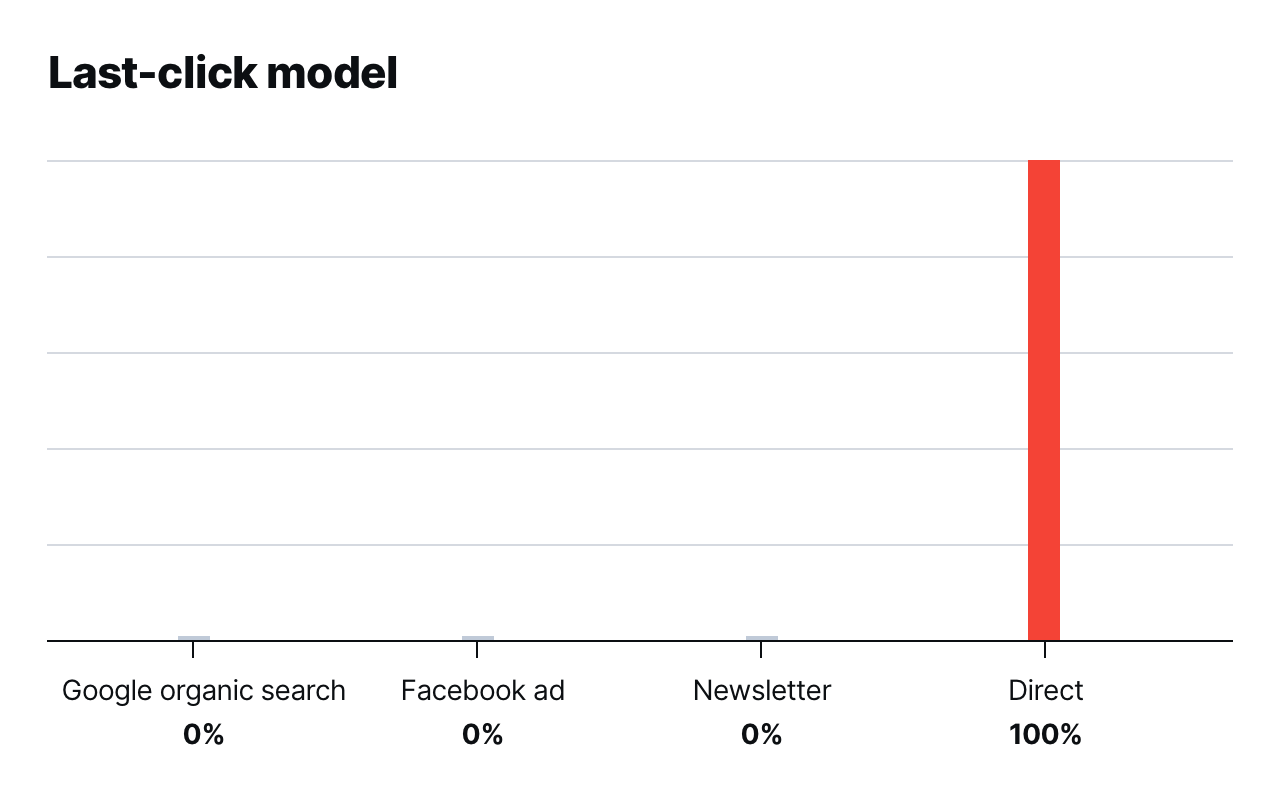
Last-non-direct-click model
The last-non-direct-click model ignores direct traffic and gives 100% of the conversion value to the last channel a visitor interacted with before buying a product or completing a website goal. In our example, all conversion credit goes to the newsletter channel, and Piwik PRO ignores the direct channel.
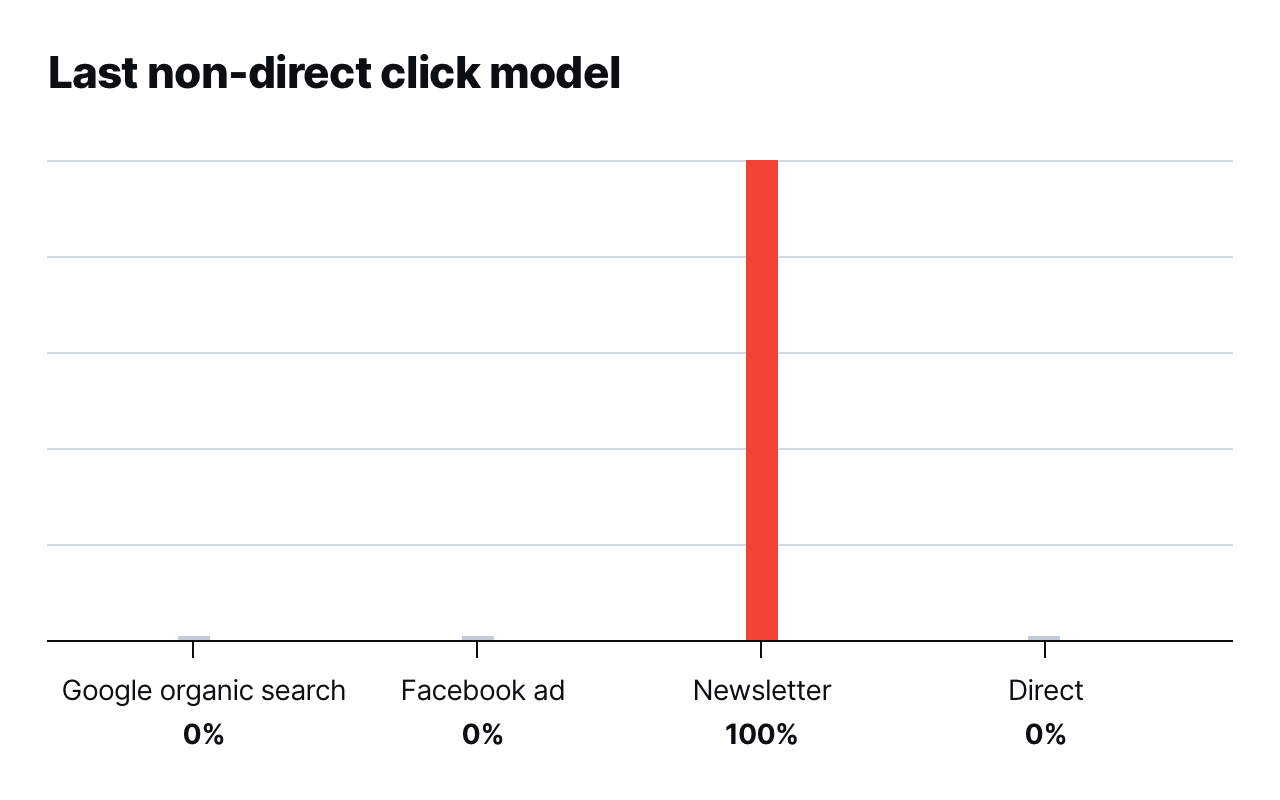
Position-based model
In the position-based model, the first and last touchpoints each receive 40% credit, and the remaining 20% is given evenly to the middle touchpoints. In our example, the conversion credit is distributed as follows:
- Google organic search: 40%
- Facebook ad: 10%
- Newsletter: 10%
- Direct: 40%
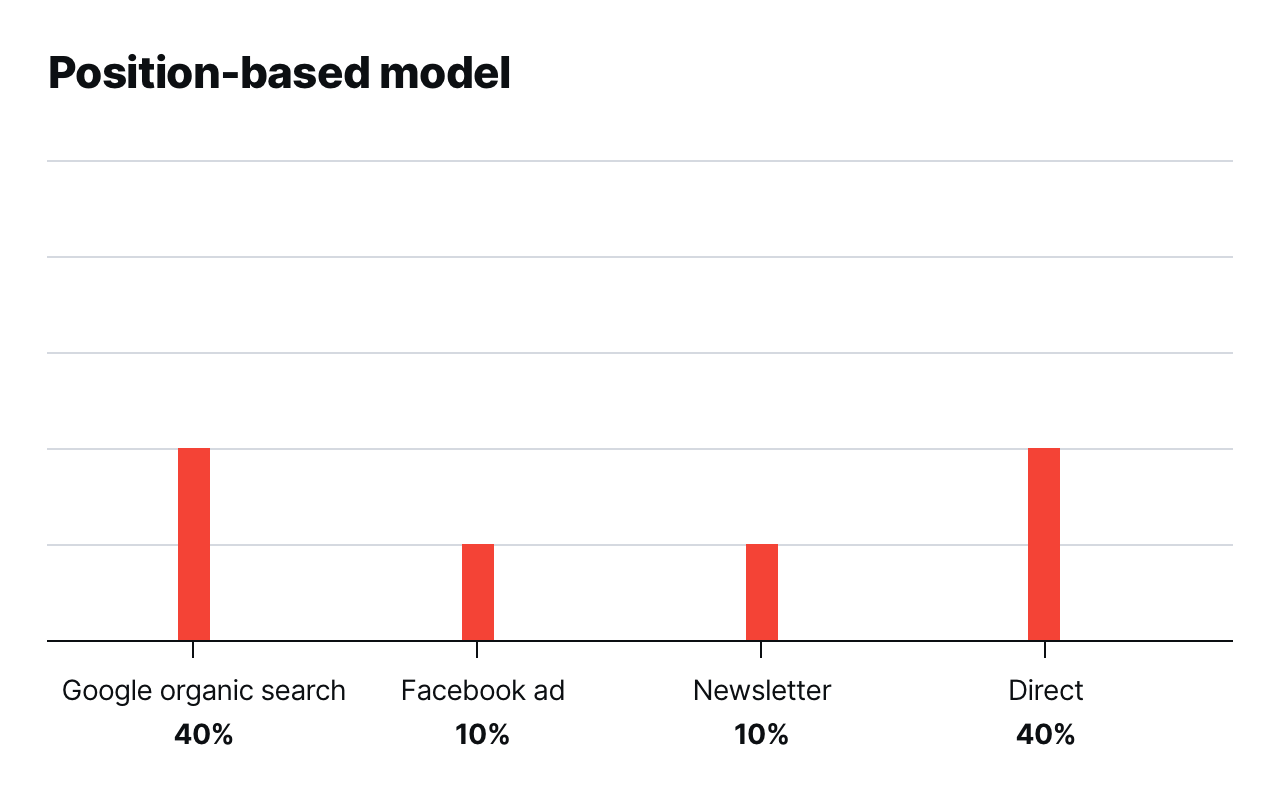
First-click model
The first-click model attributes conversion to the first channel the customer interacted with before making a purchase or completing a site goal. In our example, 100% of the credit goes to Google organic search, even though the visitor used other channels.
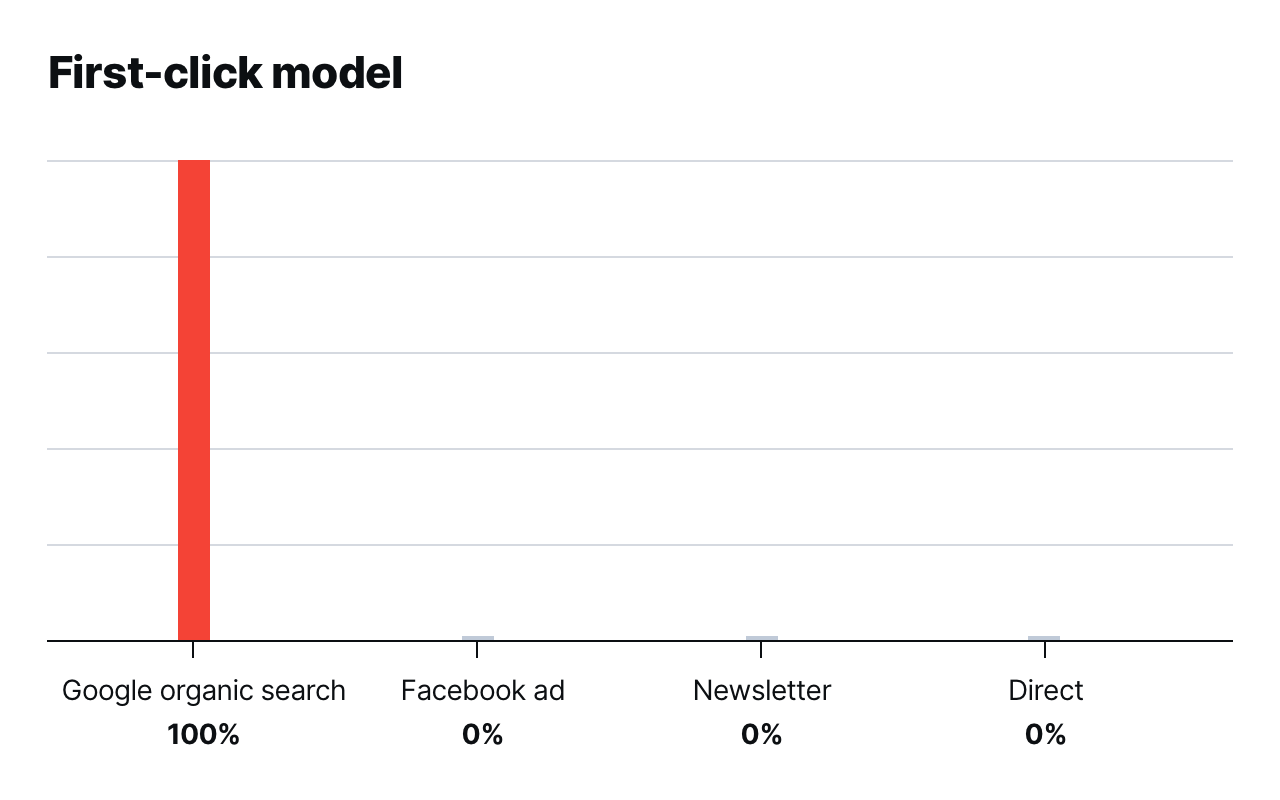
Time-decay model
The time-decay model takes into account the elapsed time to reach a goal. The touchpoints closest in time to the sale or conversion receive most credit. In our example, the conversion credit is distributed as follows:
- Google organic search: 10%
- Facebook ad: 20%
- Newsletter: 30%
- Direct: 40%
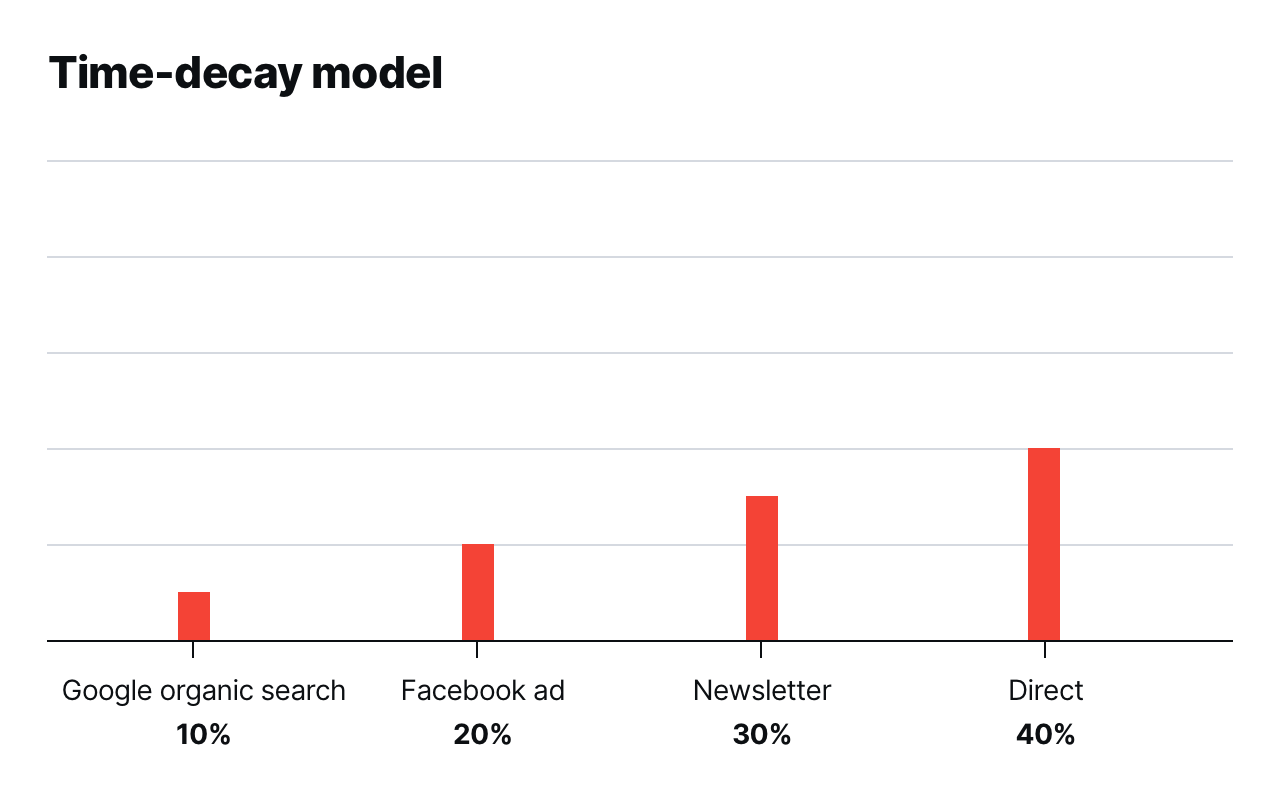
Linear model
In the linear model, each touchpoint in the conversion path contributes equally to sales or conversions. In our example, each channel receives 25% credit.
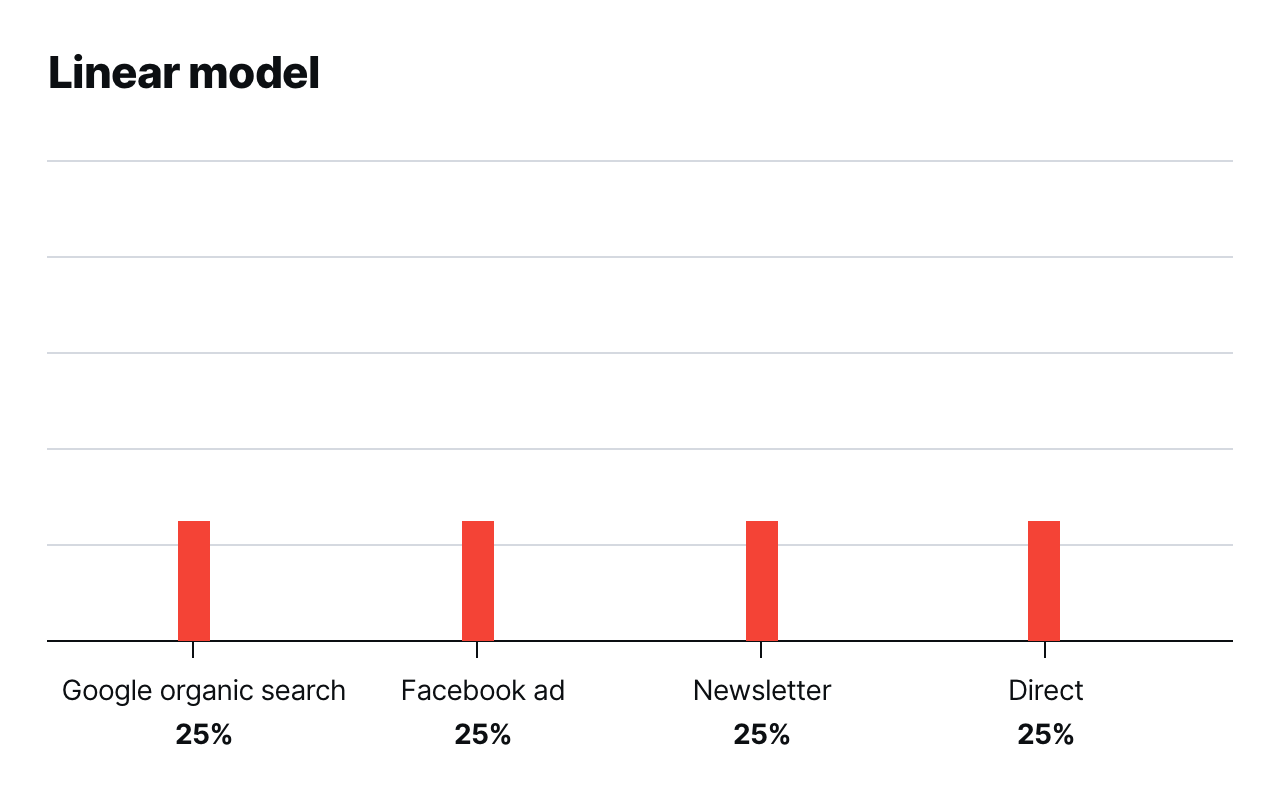
If the built-in models are not sufficient for your framework, you can use custom models.
